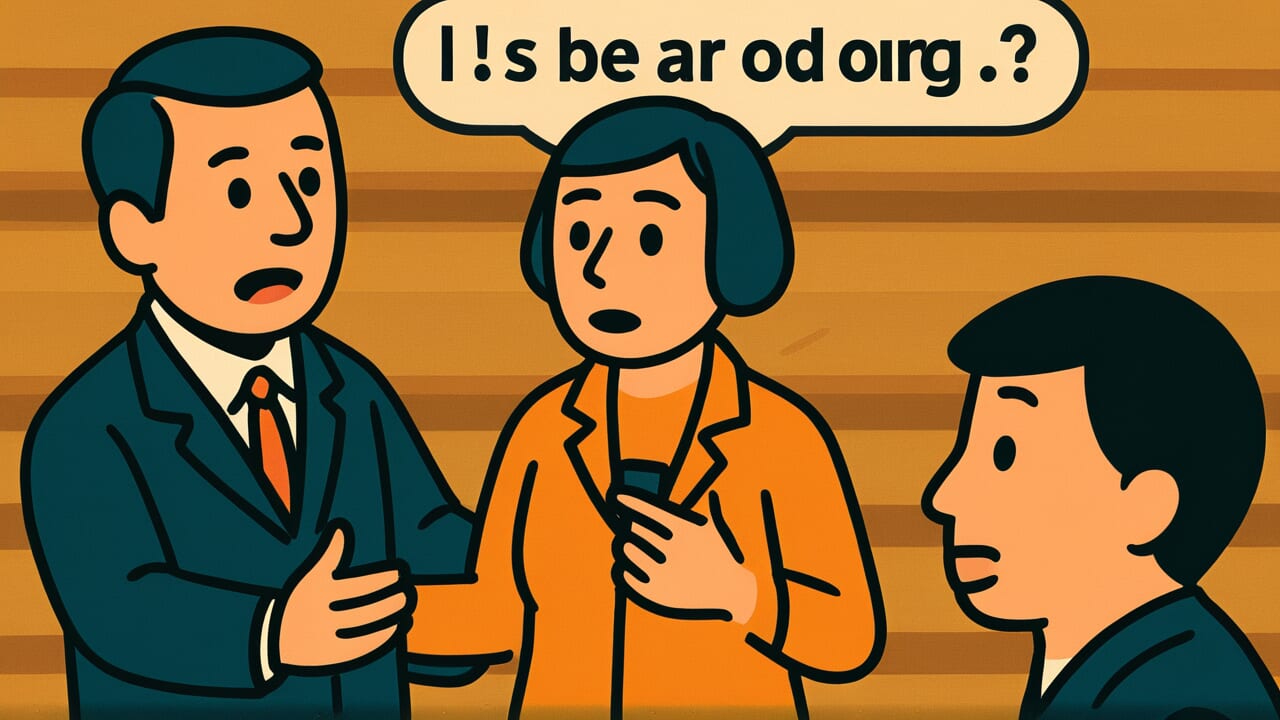How to Read “The one who speaks has no fault, and the one who listens has enough to take warning”
Kore wo iu mono tsumi naku kore wo kiku mono motte imashimuru ni taru
Meaning of “The one who speaks has no fault, and the one who listens has enough to take warning”
This proverb means that people who express their opinions bear no guilt. Those who hear these opinions should use them as warnings for self-improvement.
Even if criticism is harsh or painful to hear, you shouldn’t blame the person who spoke up. Instead, the listener should take the feedback seriously and use it to improve themselves.
This expression is used when you want to encourage honest communication in organizations or relationships. Bosses use it when asking subordinates for opinions.
It also shows a willingness to accept criticism. The saying protects speakers while asking listeners to be open-minded.
In modern society, power harassment and suppressed speech are serious problems. This makes “The one who speaks has no fault, and the one who listens has enough to take warning” more important than ever.
It removes the fear of speaking up. It creates a foundation for constructive dialogue.
Origin and Etymology
This proverb likely comes from the preface to the Shijing, an ancient Chinese text. The Shijing is China’s oldest poetry collection.
It contains works from the 11th to 6th centuries BCE. The preface includes the phrase “Yan zhi zhe wu zui, wen zhi zhe zu jie.”
This phrase traveled to Japan and became established in Japanese culture.
The background involves ancient Chinese political thought. Rulers were expected to listen to the voices of the people.
However, speaking to those in power was a life-threatening act. So a principle emerged to protect those who spoke up.
It also required rulers to listen to painful truths.
The saying came to Japan along with Chinese classics. Confucian scholars of the Edo period quoted it widely.
Records show it was used to encourage remonstrance in shogunate and domain politics. In an era of restricted free speech, this saying protected speakers.
It demanded open-mindedness from listeners. Today, people still quote it when explaining the importance of accepting constructive criticism in organizations and relationships.
Usage Examples
- The company president called on all employees to share honest opinions, saying “The one who speaks has no fault, and the one who listens has enough to take warning”
- The department head thanked a young employee for harsh criticism, saying “The one who speaks has no fault, and the one who listens has enough to take warning”
Universal Wisdom
This proverb reveals the delicate relationship between power and truth in human society. Throughout history, those with power have tended to avoid painful truths.
Those who speak truth have always faced danger. But for organizations and societies to develop healthily, this structure must be broken.
Humans have a self-defense instinct. When criticized, we react defensively before examining the content.
This is a natural response everyone has. But if we act purely on this instinct, we lose opportunities for growth.
Our ancestors understood this human weakness. That’s why they taught the importance of consciously accepting criticism.
At the same time, “The one who speaks has no fault, and the one who listens has enough to take warning” protects the courage of speakers. Speaking truth requires bravery.
This is especially true when addressing someone of higher status. But if no one speaks up, mistakes go uncorrected and organizations decline.
This saying has been passed down because it contains universal wisdom for maintaining healthy societies. The courage to speak criticism without fear.
The humility to accept criticism gracefully. With both of these, people grow and organizations thrive.
When AI Hears This
From an information theory perspective, this remonstrance system has a surprisingly clever design. In typical organizations, people who convey critical information risk punishment.
This means the “cost” is high for senders. As a result, no one speaks up even with truly important warnings.
Organizations can’t receive dangerous information. In communication systems terms, noise (fear of punishment) completely buries the signal (useful criticism).
This proverb proposes making the sender’s cost zero. By guaranteeing no guilt for speaking, information flow increases dramatically.
What’s interesting is that “meaningless criticism” inevitably increases too. But by giving the receiver a selection function of “enough to take warning,” useful signals can be extracted from the noise.
In other words, it filters at the output stage rather than the input stage.
In communications engineering, trying to completely remove noise reduces the information quantity itself. This proverb uses reverse thinking.
It deliberately allows large amounts of information to flow even with noise mixed in. The receiver’s processing ability handles it.
As a result, critical information needed for organizational self-correction reliably arrives. It’s an extremely practical protocol.
Lessons for Today
For those of us living today, this proverb teaches two important things.
First is our attitude as listeners. If you hold any position of responsibility, creating an atmosphere that welcomes criticism and dissent is crucial.
When harsh opinions arrive via social media or email, suppress the urge to argue back reflexively. First, try to see from the other person’s perspective.
That opinion might contain blind spots you hadn’t noticed. No one is perfect.
Examining yourself through others’ eyes is a shortcut to growth.
Second is courage as speakers. If you think something is wrong, have the courage to speak up in an appropriate way.
However, don’t criticize just for criticism’s sake. Convey it as a constructive proposal toward a better direction.
By practicing the spirit of “The one who speaks has no fault, and the one who listens has enough to take warning,” more open dialogue emerges at work and at home.
Relationships where you lift each other up will enrich your life.



Comments